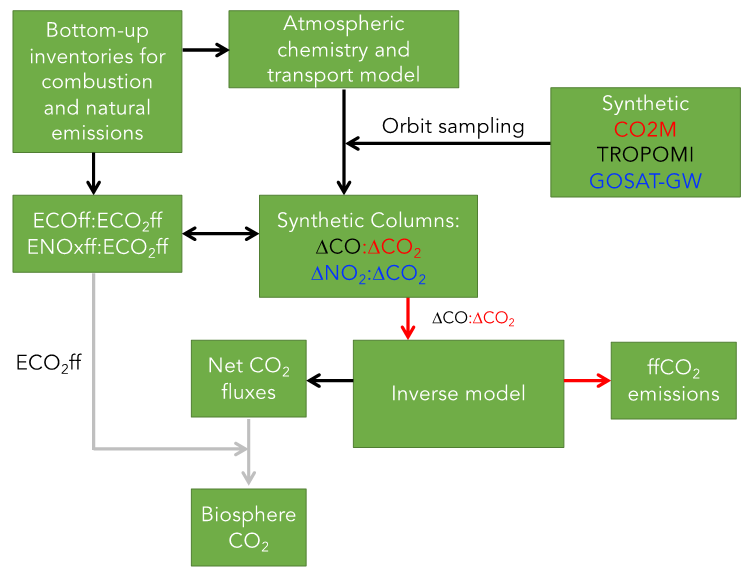File : D2.15
Author : Paul Palmer et al. (UEDIN)
We use synthetic clear-sky measurements of CO2 and NO2 from the ESA Copernicus Carbon Dioxide Monitoring (CO2M) mission and the Japanese Greenhouse Gases Observing Satellite for Greenhouse gases and Water cycle (GOSAT-GW) to understand the relationship between inventory emissions of NOx, CO, and CO2 and the corresponding elevated (above the background, denoted by D) atmospheric column values of NO2, CO, and CO2 that are indicative of local fluxes. A strong correlation between inventory and atmospheric ratios provides confidence in our use of atmospheric data to infer combustion emissions to CO2, as we do in the second part of the report. We find that CO2M and GOSAT-GW will provide sufficient data to evaluate statistically atmospheric ratios of DNO2:DCO2 and DCO: DCO2 in the contrasting months of July and December, unlike analysis supported by current satellites where coverage is sparse during winter months, although there will still be gaps in December where there is persistent cloud, e.g., eastern Europe. We find that the larger data volumes provided by CO2M and GOSAT-GW, compared with current satellites, still do help us to use directly the mean national values of DNO2: DCO2 or DCO:DCO2 without considering atmospheric transport and photochemistry. Our joint CO2:CO OSSE inversion, using a combination of synthetic observations of CO2 from CO2M and CO from TROPOMI, demonstrates the potential of these instruments to estimate ffCO2. Using only CO2 constrains biospheric CO2 but not ffCO2. Using only CO2 constrains biospheric CO2 but not ffCO2. Using CO data improves the ability to estimate ffCO2 emissions, particularly in January and October, with error reductions for ffCO2 equivalent to those achieved for biospheric CO2 fluxes. However, our results are dependent on the OSSE configuration. We assume an ffCO:ffCO2 prior error correlation of 0.85, and the inversion performance would degrade if is reduced. Better establishing the nature of these prior error correlations will determine whether a CO: CO2 inversion will provide additional constraints on national ffCO2 emissions.

Figure 1 : Overview of the work being shown in this technical note
